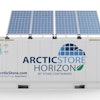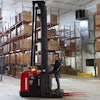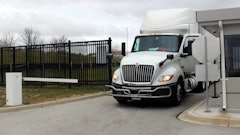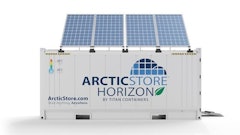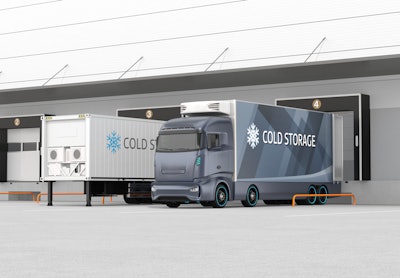
Cold storage operators face mounting pressure to control costs while maintaining precise temperature requirements. With energy expenses representing up to 30% of operational costs in refrigerated facilities, effective efficiency strategies have become a business imperative. As sustainability metrics increasingly factor into supply chain evaluations, balancing temperature integrity with energy optimization is both an operational necessity and a competitive advantage.
In cold storage facilities, temperature integrity is critical - even minor fluctuations can compromise product safety and quality. Each loading dock opening represents an area where energy loss can occur, which places an enormous strain on refrigeration systems.
The impact happens immediately: compressors work harder, energy consumption spikes, and costs rise. For temperature-sensitive products like food and pharmaceuticals, momentary spikes in temperature, while being transported over a loading dock, can result in negative consequences beyond energy waste.
Implementing energy efficiency strategies delivers a dual benefit: advancing sustainability goals while reducing operational costs. By focusing on loading dock efficiency, cold storage operators can make meaningful progress toward both environmental and financial objectives, transforming their facilities into models of sustainable temperature-controlled operations.
The process extends beyond assessment to include targeted implementation and results tracking.
Here are the nine most effective strategies to maximize energy efficiency at the loading dock in cold storage facilities:
- Conduct systematic assessment: Begin with comprehensive thermal heat testing to evaluate temperature differentials caused by gaps between dock doors and levelers. This data-driven approach helps identify specific opportunities for improvement while quantifying both the environmental and financial impacts.
- Insulate doors properly: Use doors with high R-value insulation to minimize heat transfer. Insulated doors help maintain desired temperatures inside storage areas, reducing HVAC system load. Ensure all gaps, cracks, and seams around doors are properly sealed with weatherstripping or door sweeps to prevent air leaks.
- Consider vertically storing dock levelers over traditional pit-mounted levelers: Vertical levelers store inside the building away from the thermal break. Pit mounted levelers, on the other hand, straddle the area between hot and cold environments, creating more gaps where energy loss can occur.
- Install the appropriate dock seal or shelter for your application: Like all loading dock equipment, seals and shelters come in all different shapes and sizes. Properly specified and installed dock seals and shelters are a critical component in maintaining facility climate control and maximizing your energy savings.
- Upgrade to high-speed doors: High-speed doors open and close quickly, with speeds exceeding 120 inches per second, reducing the amount of time doors remain open and minimizing temperature loss. Choose high-speed doors that are designed for your specific environment and temperature. They are typically used on interior openings with less extreme temperature differentials than at the loading dock.
- Use air curtains or strip curtains: Install air curtains to create an invisible barrier of air that helps maintain temperature control while allowing easy passage. Strip curtains are a low-cost solution for separating areas with minor temperature differences.
- Temperature zoning: Use insulated doors to separate different zones within the facility. This reduces workload on refrigeration units and maintains consistent temperatures. Implement thermal barriers between different zones to further enhance temperature control and energy efficiency.
- Air quality control: Air purification systems regularly move air through the facility, capturing airborne contaminants and destratifying the air to help reduce heating and cooling costs. They have the added benefit of using HEPA filters to capture 99.97% of particulates as small as 0.3 microns which reduces airborne pollen, pollution, bacteria, and viruses.
- Preventative pest control measures: Cold storage facilities are particularly vulnerable to pest infiltration through the same gaps allowing energy loss. Specialized sealing solutions, such as steel wool filled bottom seals on overhead doors, address both energy efficiency and food safety concerns simultaneously.
Cold storage facilities present unique opportunities for sustainability improvements. Because refrigeration systems operate continuously, even small efficiency gains can significantly reduce a facility's carbon footprint over time. Today's cold storage leaders recognize that loading dock efficiency isn't just about cost control—it's about competitive advantage. The facilities that excel will be those that transform these critical transition points from energy liabilities into strategic assets that strengthen both operational resilience and environmental performance.

